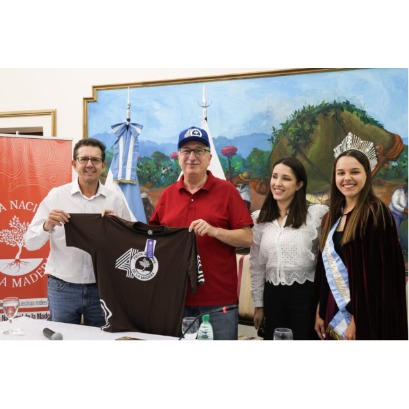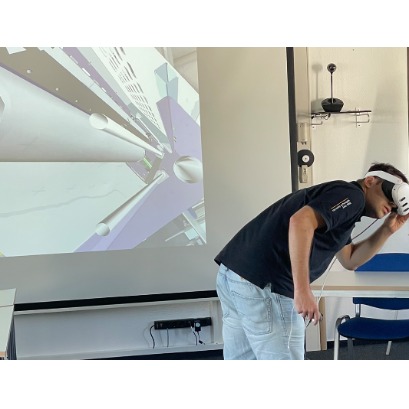
CSIC scientists show that Europes forests lose their ability to absorb carbon for years
The forests of Europe have lost the ability to absorb carbon in recent years due to different factors that are analyzed and quantified in a recent CSIC study, Higher Council for Scientific Research.
The intensification of wood felling, the decrease in repopulations and extreme episodes of heat and drought, among the responsible factors. Forests are allied in the fight against climate change thanks to their ability to absorb CO? of the atmosphere and keep it kidnapped in the form of carbon in the trunk, the leaves, the roots or in the soil. They currently cover about 40% of the territory of the European union Between 1990 and 2022, they have absorbed around 10% of emissions derived from human activity. Even so, a recent article published in the Nature magazine, led by Mirco Migliavacca, a researcher at the Joint Research Center, and that has had the participation of CREAF and CSIC, warns that its ability to kidnap carbon is in decline. According to the EU Lulucf inventory (which calculates the carbon sinks of the forest ground, wet areas, wet areas, and agricultural areas Among others), the forest carbon deposit in Europe went from 457 million tons of equivalent absorbed every year between 2010 and 2014 to 332 million tons of CO? equivalent absorbed every year between 2020-2022. That is, a reduction of almost a third in just a decade. This ends at risk the climatic objectives of the European Union that establishes that the EU has to be climatic neutrally in 2050. Within this roadmap, the revised regulations on the Lulucf sector set for 2030 the goal of absorbing 310 million tons of equivalent. If we take into account the decline lived in 10 years, it seems that this will not be possible. Factors of the declines factors behind this decline are several and often interconnected. The study identifies as main responsible the intensification of wood felling, linked to a growing demand for wood consumption both at European and global scale; The increase in natural disturbances such as fires, storms and pests, which are often followed by premature talas to remove dead or burned wood; to the fact that forests no longer expand at a pace as accelerated as a few years ago and there are no longer as many repopulations; to the aging of forests, which reduce their capacity for growth and carbon absorption; and to the extreme episodes of heat and drought, which decrease the photosynthesis and the productivity of the trees. These impacts may have persistent effects for years, weakening forests and aggravate forest mortality and carbon ability losses. Missing to urgently focus on the focus implies a balance between productive activities, such as logging, and the conservation of natural habitats. The study, then, suggests science -based management models that combine forests with different ages and degrees of protection, alternating areas for sustainable production with other reserved for strict conservation. This diversification helps protect biodiversity and maintain carbon stored in different forest compartments, such as living wood, dead wood and soil. Thus, this solution will only be valid in very determined places and with more favorable climatic conditions.
IT MAY INTEREST YOU
 National, regional and sectoral authorities participated in the opening ceremony of ExpoFerretera 2�25
National, regional and sectoral authorities participated in the opening ceremony of ExpoFerretera 2�25
Buenos Aires, October 2�25 – At the opening ceremony they coincided representatives of the entire hardware value chain. There, the main Sector leaders ratified the strategic role that the spaces of meeting and networking. Furthermore, the second day of the event passed with an agenda full of activities.
 Missions | The traditional National Wood Festival in November celebrates four decades of a popular gathering in San Vicente
Missions | The traditional National Wood Festival in November celebrates four decades of a popular gathering in San Vicente
The official announcement of the 4�th San Vicente National Wood Festival was made this Tuesday by the governor of Misiones, Hugo Passalacqua. The cultural and festive event will take place from November 5 to 9 at the Verón Gallardo Sports Center in San Vicente, Misiones, to celebrate four decades of history. The San Vicente National Wood Festival is a popular meeting point for the agroforestry and commercial community in the Alto Uruguay area, and is an opportunity for the forestry-industrial chain to expose its development and services. The festival includes cultural, artistic and economic promotion activities.
 Real and virtual commissioning: Hymmen leverages digital twins to improve project management efficiency.
Real and virtual commissioning: Hymmen leverages digital twins to improve project management efficiency.
Bielefeld, 1�/22/25 – The ideal scenario is one in which a production plant functions perfectly even before commissioning. However, a more detailed analysis of plant projects often reveals a different reality: unexpected challenges often arise during on-site commissioning that must be resolved with considerable deadlines. Hymmen demonstrates how digital twins can offer a solution. By simulating the production process in advance on a 1:1 scale and taking into account all relevant variables, this technology allows timely intervention at critical points.





















